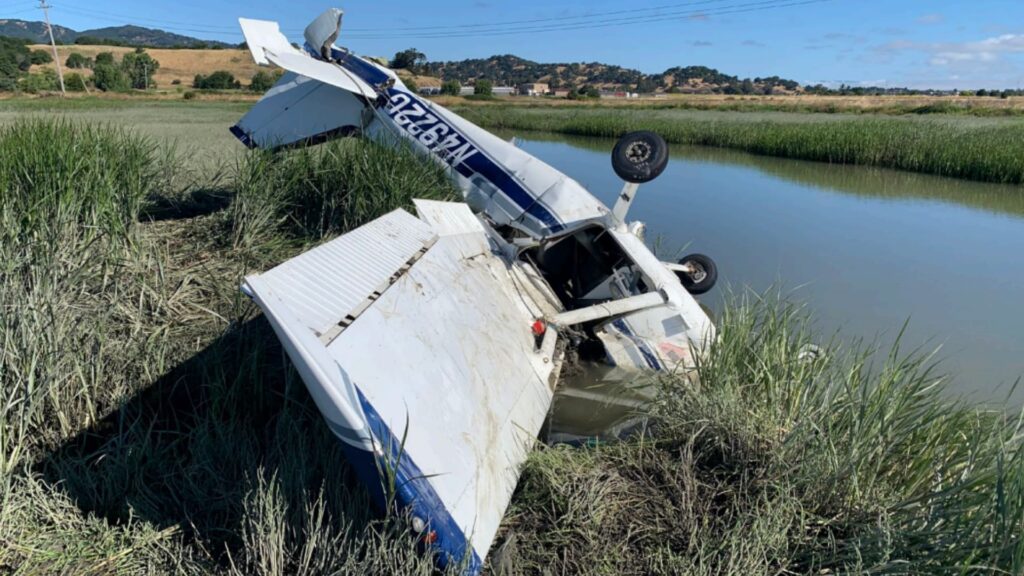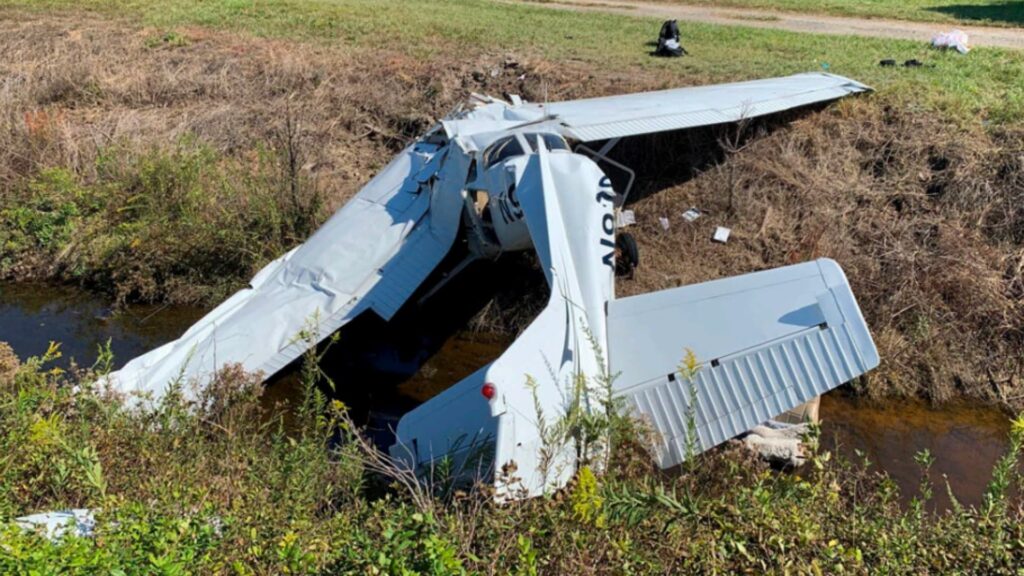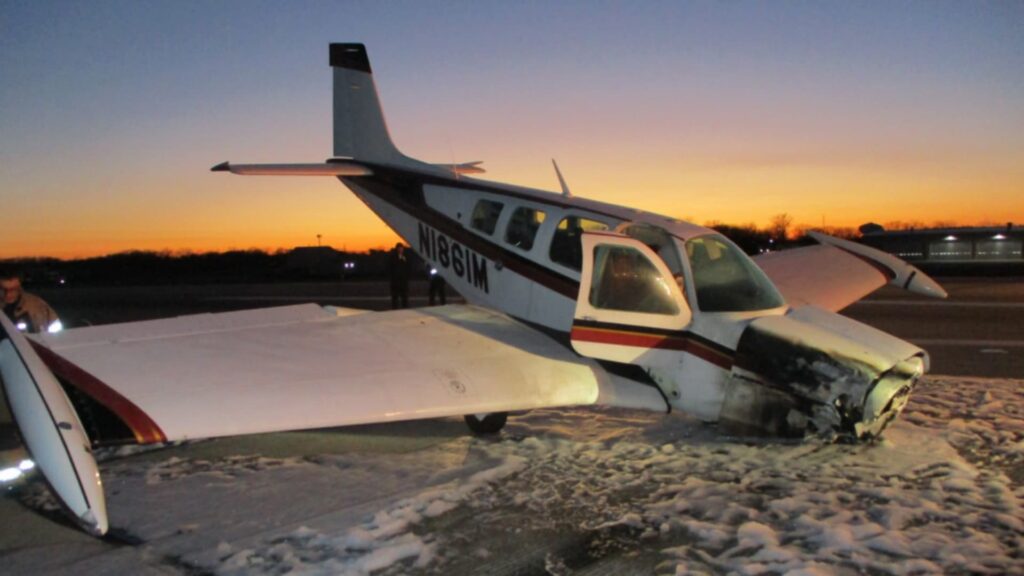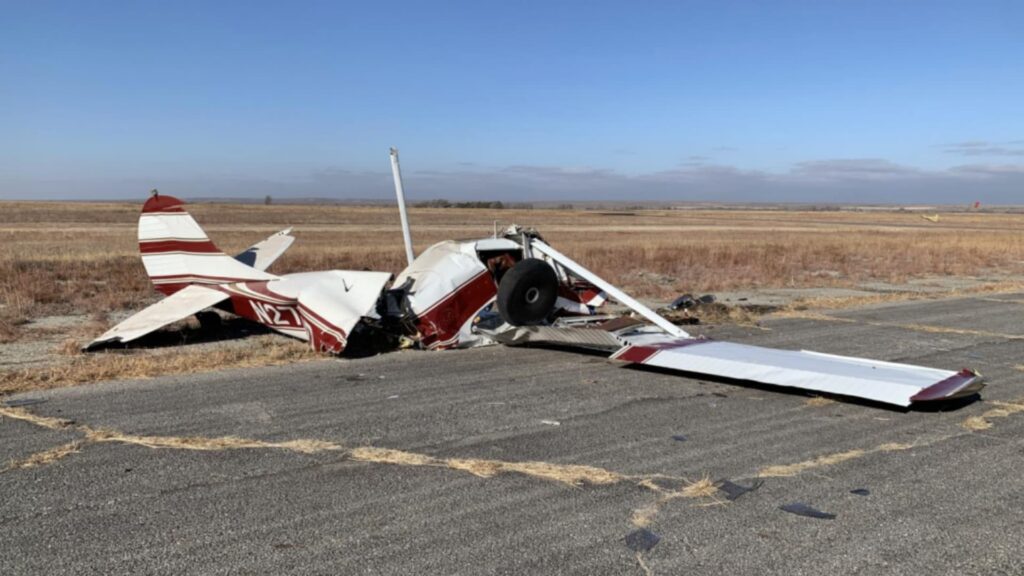A Beautiful Day Ends in Tragedy
The day started like many others for the 73-year-old private pilot, who had logged over 400 total flight hours, with 279 as pilot-in-command and nearly 12 hours in the last month. His Cessna 172N, built in 1979 and powered by a 180-horsepower Lycoming engine, was flying a straightforward VFR cross-country route. It was a roundtrip from San Rafael Airport (CA35) to Silver Springs, Nevada (SPZ), and back.
The plan was to refuel at SPZ, but with no personnel available to operate the fuel equipment, the pilot made a detour to Minden-Tahoe Airport (MEV). There, he topped off with 22.63 gallons of 100LL and departed just after 8 PM for the return leg to San Rafael.
Everything was going smoothly—until it wasn’t.
The Descent That Changed Everything
At 12,500 feet, the Cessna began a long enroute descent about 65 miles from its destination. Weather was clear, visibility was 10 miles, and winds were light. But lurking within those seemingly benign conditions was a subtle hazard: the temperature and dew point—13°C and 10°C—created the perfect storm for carburetor icing.
According to ADS-B data, the aircraft held steady on a descent at around 90 to 110 knots before slowing considerably. Just moments before reaching the airport, the speed dropped to 43 knots at 500 feet, and seconds later, the plane collided with power lines, flipped, and crash-landed in a marshy canal near the approach end of runway 22 at CA35.
The passenger, seated on the right, did not survive. The pilot, seated left and secured with a three-point harness, was seriously injured but survived.

The Crucial Misstep
The pilot later told investigators he tried to add power during the descent to level off—but the engine didn’t respond. He attempted to troubleshoot: checking the fuel selector, magnetos, and then selecting carb heat. But it was too late.
Critically, the Pilot’s Operating Handbook (POH) lists “Carburetor Heat – AS REQUIRED” during descent, especially in conditions conducive to icing. For landing, the guidance is even clearer: apply full carb heat before closing the throttle.
But this pilot had a different habit. He reported that he would normally wait to apply carb heat until descending below 1,500 feet, just before entering the pattern—a delay that, under these conditions, may have sealed the aircraft’s fate.
What the Wreckage Revealed
The aircraft was found partially submerged and inverted in a marsh just northeast of the runway threshold. Both wings were still partially attached to the fuselage, though significantly damaged. The fuel selector was set to “Both,” and no fuel was found in the lines—likely because the system had been underwater. A faint fuel odor lingered in the right tank.
Crucially, arcing signatures were discovered on the wing tips and struts, consistent with a powerline strike. One propeller blade was marked and bent from contact with an energized line. The aircraft struck wires 30 feet in the air, with one thick power cable found wrapped around the tail and horizontal stabilizer.
Despite the impact, no pre-accident mechanical failures were discovered. The propeller, still attached to the crankshaft, showed no signs of rotation at the time of the crash—corroborating a total loss of power.

Carburetor Icing: The Silent Threat
This wasn’t a case of contaminated fuel or a mechanical failure—it was a classic carburetor icing accident. The FAA has long warned that carb icing can strike at temperatures well above freezing, especially in humid or moist environments.
As fuel vaporizes in the carburetor, it cools the surrounding air dramatically—combined with the Venturi effect, this can cause ice to form rapidly on internal surfaces. If not countered with timely use of carb heat, that ice can choke off airflow and shut down the engine. In this case, the engine likely iced up during the long descent without carb heat—exactly the kind of condition highlighted in FAA bulletins.
Even though the carb heat selector was found in the ON position at the crash scene, it appears it was activated too late to be effective.
Human Factors and Habit
The pilot wasn’t a beginner. With over 400 hours and recent experience, he met the typical Part 91 profile of a competent general aviation flyer. But his habit of delaying carb heat until joining the traffic pattern may have been an adaptation to routine fair-weather flying—a comfort zone that didn’t hold up under subtle but critical atmospheric conditions.
This wasn’t a reckless or careless flight. It was a tragedy rooted in a small but significant oversight, magnified by timing and circumstance.
Safety Lessons: Timing Matters
- Carb heat isn’t just a checklist box. It must be applied proactively—especially during long descents in humid, cool weather.
- Familiarity breeds complacency. This pilot routinely flew into CA35 and likely considered it a routine return trip. But even “routine” days can offer unexpected hazards.
- Don’t underestimate “benign” weather. Carb ice often forms in non-threatening skies. Pilots must remain vigilant, especially during engine power changes or extended throttle-back operations.
Conclusion
The crash of N4922G is a powerful reminder that aviation safety often hinges on the small things. In this case, a single habit—waiting to apply carb heat—may have contributed to the loss of an engine, the collision with powerlines, and ultimately, a passenger’s life.
Let this serve as a humble reminder to all pilots: procedures exist for a reason, and even minor deviations in timing can have major consequences.











7 Comments
What is the purpose of delaying the use of carb heat?
To save money perhaps? I don’t know, I’ve never even heard of carb heat or carb icing. Does this happen to airliners as well? I’m amazed that anything can form ice in 13 deg C.
Why aren’t more single engine aircraft fuel injected?
I’m not sure what fuel injection is, even in a car. How would this help?
I had a very similar plane, a 1977 C172N, 180hp engine. My procedure for carb heat usage was to always pull it on when operating at low power settings, near the bottom of the green arc, regardless of weather. This typically is the setting in controlled descent to an airport. When air temp is near the dew point, I always used carb heat in any lower power setting, but often pulled it every 10 minutes or so just to see if there was a drop in rpm, the absence of which would suggest carb ice.
Never know when a gremlin will bite you . . . when something bad goes down – there are many affected.
link to the deceased: https://patch.com/california/sanrafael/fundraiser-family-novato-man-killed-san-rafael-plane-crash
Not a pilot, but interested in causes of airplane accidents. The magnitude of potential errors a pilot must be knowledgeable about is enormous!